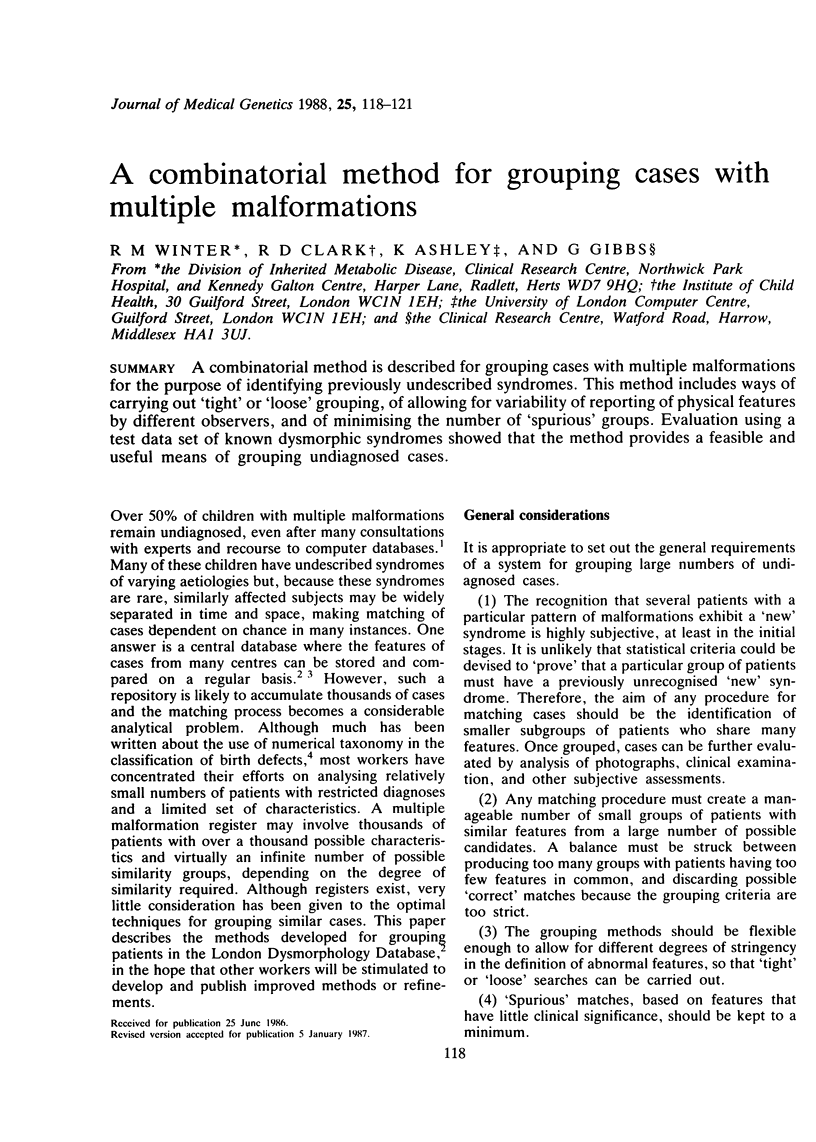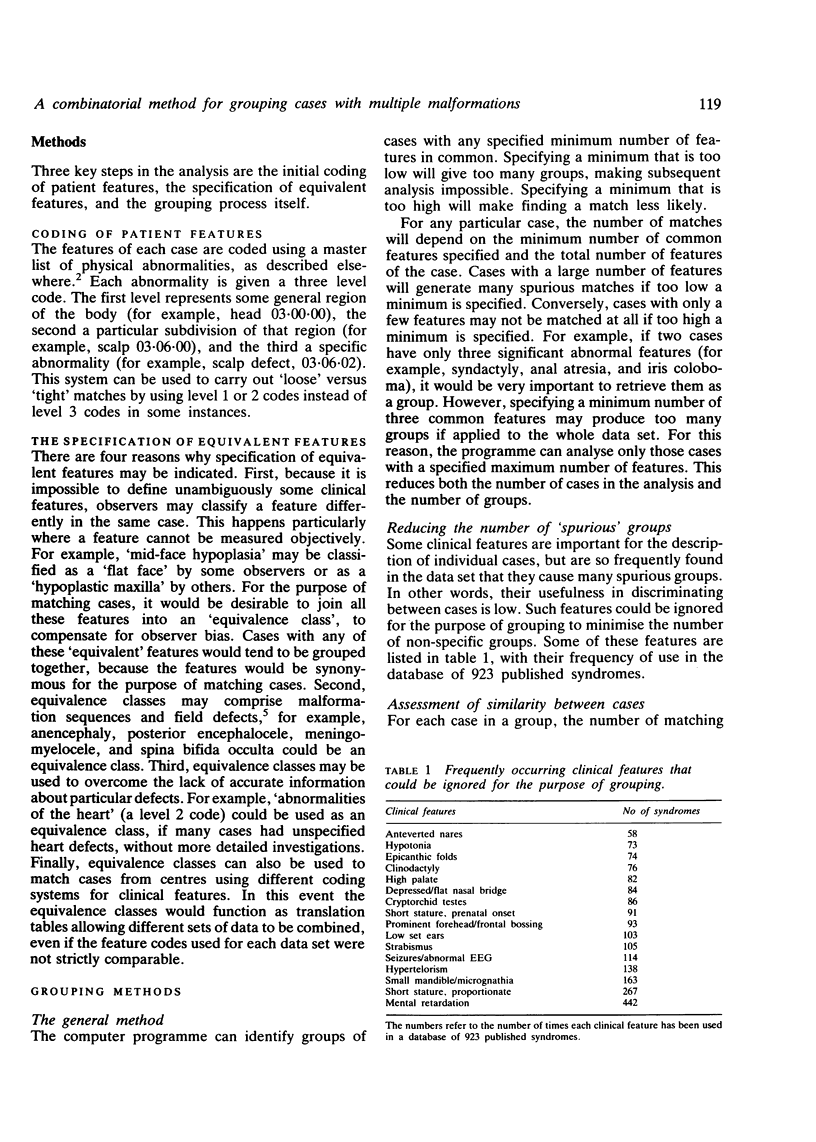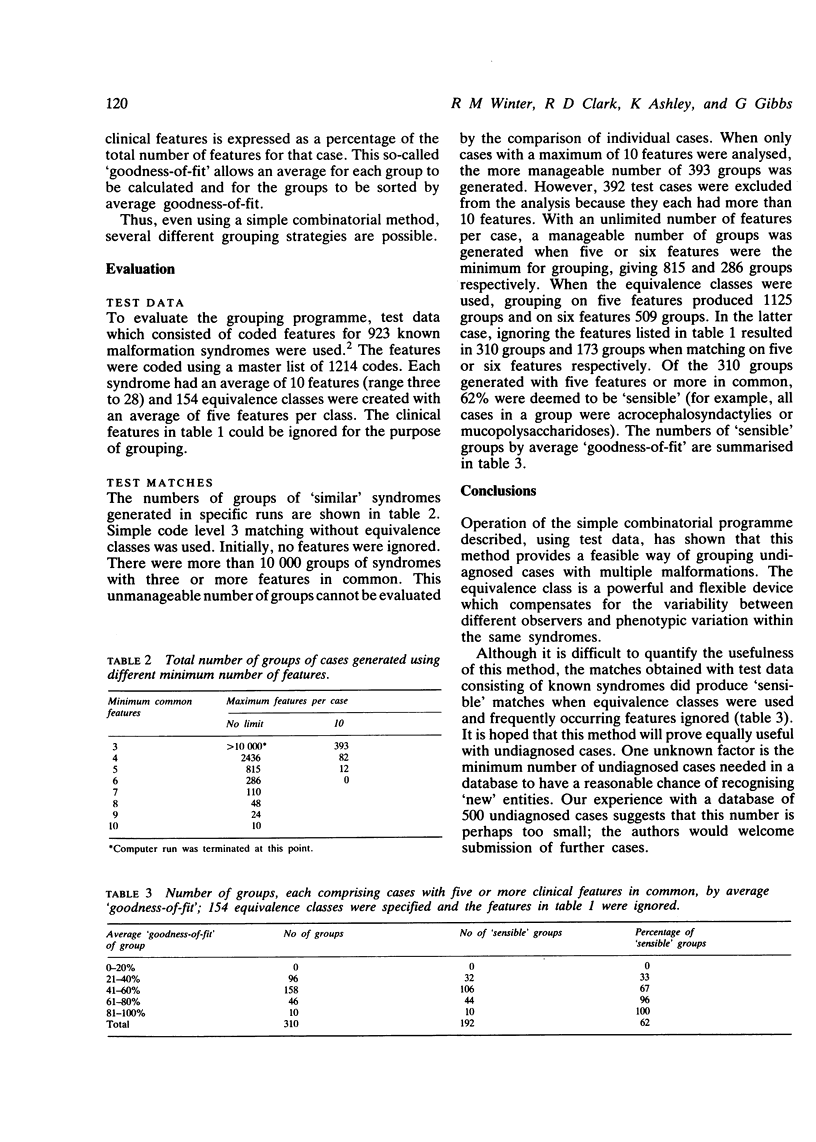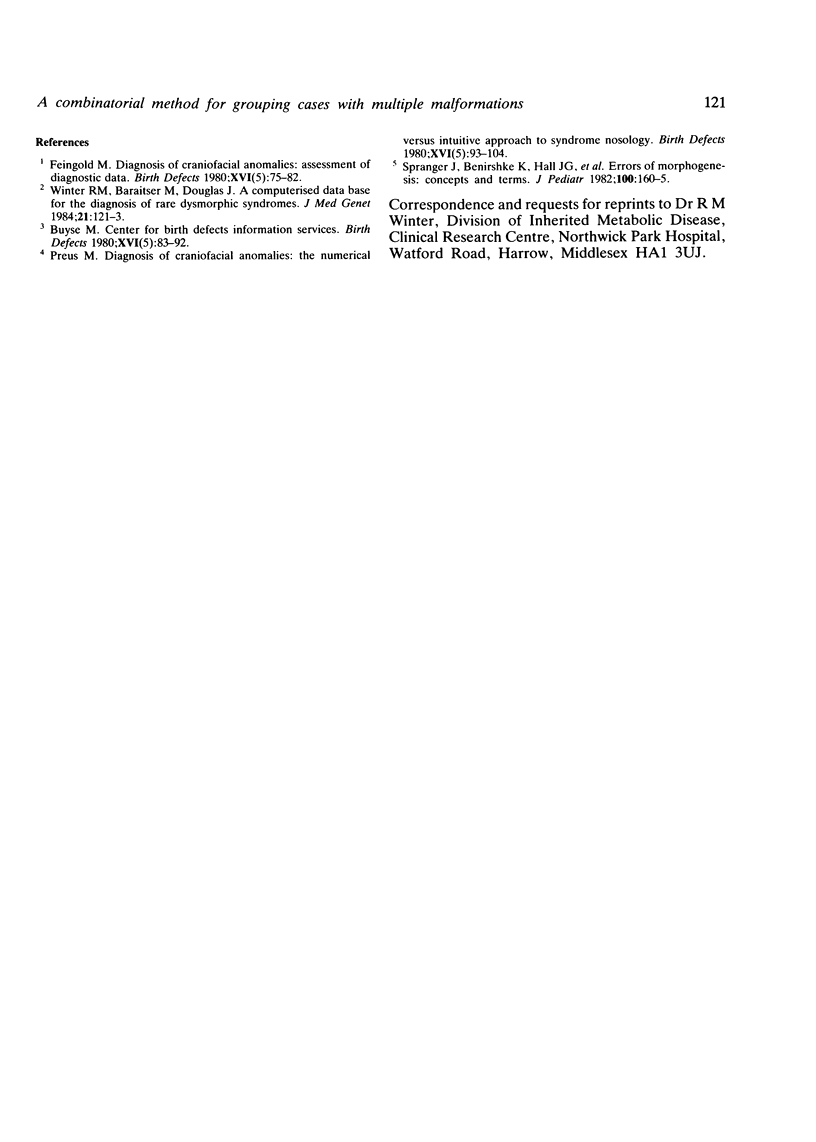Abstract
A combinatorial method is described for grouping cases with multiple malformations for the purpose of identifying previously undescribed syndromes. This method includes ways of carrying out 'tight' or 'loose' grouping, of allowing for variability of reporting of physical features by different observers, and of minimising the number of 'spurious' groups. Evaluation using a test data set of known dysmorphic syndromes showed that the method provides a feasible and useful means of grouping undiagnosed cases.
Full text
PDF



Selected References
These references are in PubMed. This may not be the complete list of references from this article.
- Spranger J., Benirschke K., Hall J. G., Lenz W., Lowry R. B., Opitz J. M., Pinsky L., Schwarzacher H. G., Smith D. W. Errors of morphogenesis: concepts and terms. Recommendations of an international working group. J Pediatr. 1982 Jan;100(1):160–165. doi: 10.1016/s0022-3476(82)80261-8. [DOI] [PubMed] [Google Scholar]
- Winter R. M., Baraitser M., Douglas J. M. A computerised data base for the diagnosis of rare dysmorphic syndromes. J Med Genet. 1984 Apr;21(2):121–123. doi: 10.1136/jmg.21.2.121. [DOI] [PMC free article] [PubMed] [Google Scholar]


